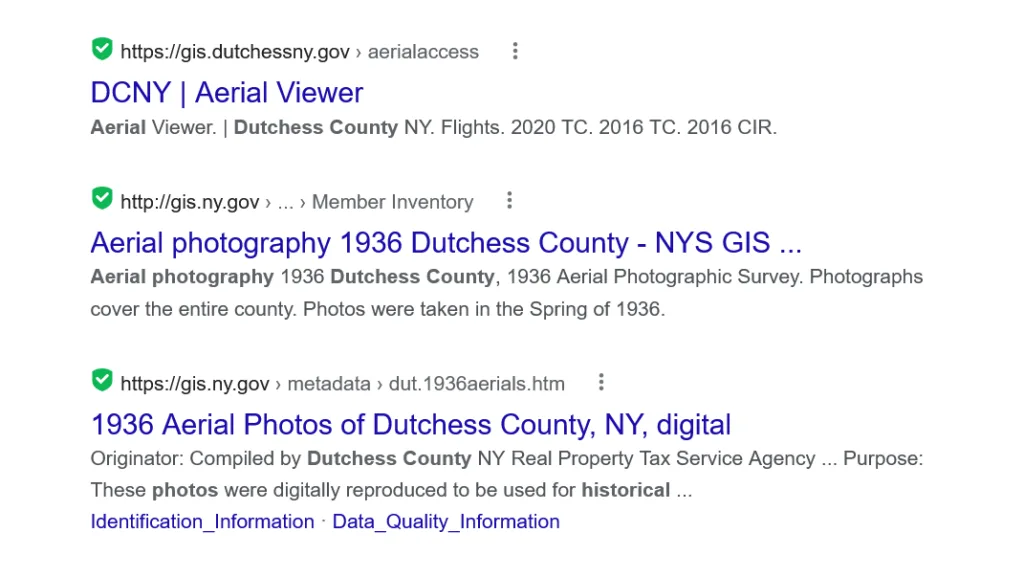Have you ever wondered whether it is possible to research and find out the history of your house? In this post, I will explain how you can learn about your home's unique history.
Unless your house is very new and you are the only person who has lived in it, your house has a history separate from your time living in it. Those of us who are very curious about family history and genealogy are often inspired to curiosity about the history of our homes.

I have recently been perusing homes for sale in the northeastern United States, and one of the things that really stands out to me is the incredibly number of homes that are very, very old. Of course, the definition of an "old" house will depend on where in the world you live, as in some countries, it is not uncommon to find homes that are many hundreds of years old.
The older the home, the more history can be associated with it. This also means that older homes can be exceptionally interesting to learn about.
What if you live in a new house?
Those of us who have spent time living in homes that were fairly new might feel left out when it comes to exploring the history of a home. Even if your house is new or you are the only person that has ever lived in it, you might be surprised to learn that your property might have an interesting history completely unrelated to your house.
There are many websites that specialize in providing historic aerial maps. You can enter in an address and then view the historic map of the locations that interest you.
One such website is Esri's World Imagry Wayback, though you might not find very old maps on the site. Many counties and states also maintain searchable historic photographs and maps, which you can find by searching Google using the name of your state or county, and "historic aerial images".
For example, if your house is in Dutchess County, New York, a Google Search for Dutchess County Historic Aerial Images will reveal results like this:

These historic maps are a great way to find clues about the previous owners of your property, prior building types that may have been on your property, and the types of documents that you might be able to find to learn more about the history of where you live.
Can you find out who lived in your house?
Yes, it is possible to find out who previous lived in your house. There are a few different ways that you can go about researching who the previous owners and residents of your home were.
Check the title abstract
If you live in a state where abstracts are used, the first thing that you should do is check to see if you received one after you purchased your property. It may have been mailed to you by your real estate attorney 1-2 months after your sale was complete, and would likely be a thick collection of documents that pertain to all of the previous owners of your property.
Most people didn't get an abstract or live in a place where they are not commonly used. If this is the case with you, don't worry- there is still a lot you can do to learn more about your home's history.
Research property tax records
Most counties in the United States have property tax records available online. If your county has made these records available, you may be able to identify the more recent previous owners of your home.
If tax and property records are available online, you should be able to trace ownership names back at least 20-30 years. Occasionally, some counties or cities might have information going even further back.
For example, I was recently researching this question about a Virginia property, and I found property records going back to the 1980s online. Some counties may have records that go even further back, and cities such as Philadelphia, which has property transfer records online going back as far as 1693.
Check census records online
If you live in a house that was built before 1950, you might be able to locate US Federal Census records for your town and find out who was living in your home for each census year. The United States takes a nationwide census every ten years, so you could see who lived in your house during that census year.
If you live in a very old house, you should be aware that street names and house numbers may have changed over the years. If you struggle to find your street name and number in an old census record, you might want to check with old maps of your town to see if you can identify what the name of your street used to be.
Talk to neighbors
If you live in a neighborhood where people tend to stay put for a long time, you might be able to speak with your neighbors to see if they remember any names or stories about the people who used to live in your house. This may give you a few names to work.
How to research the history of your house
If your home is older than 30-50 years, you might not be able to learn about the original owners on the internet in order to research the history of your house. You might have better luck taking a trip to your county courthouse or city hall in order to visit the recorder, clerk, or register of deeds office where you live.
Every county keeps thorough records of transfers of property and titles, and so you should be able to perform a search of your address in order to discover more details about the previous families who lived in your home. When I did this for a property that I owned previously, I was able to learn the name of the general contractor who built the house and even see the original building plans and permits, as well as records related to the purchase of the tract where the entire subdivision was to be located.
At some county clerk's offices, you might be able to find old maps of your county. These old maps are especially interesting if your property is less than 50 years old, as the land that your home is on might have been used for a different purpose prior to the construction of your house.
During my visit to the county clerk's office, I learned that the land where I lived had previously been used for farming by a family-owned farm until the 1950's. This might explain the old horseshoe that I found while digging in the garden!
Prior to the land being used by this particular farmer, the historical maps of that county indicated that the entire geographic area of the county had essentially been divided between five different landowners some time before 1890. Sometimes you can find old maps online, either at your local library, university, or sites like World Imagery Wayback
The river that is located to the north of where I used to live served as a historical boundary between the territories of the Creek and Cherokee Indians. So, this means that the land that my old house sat on was part of the lands of the Creek Indians, who were forced to cede their territory to the US government after in 1826.
As amateur genealogists and historians, we have to be ready to follow the paper trail, wherever it might lead. It was interesting to imagine the different people that had called that small bit of land their own.
Once you have learned about the previous owners of the property, you can decide what else you would like to learn. You might explore how understanding the history of your property helps you to better understand your community's history.
This is especially true if your family has been living in your area for a long time, and your family history is intertwined with that of the place where you live.
Conclusion
I hope that this post has helped you learn more about how to research the history of your house, how to find who has lived in your house, as well as how to find historic photographs of your property.
If you have any questions about something that you have read in this post, or if you would like to share an interesting detail that you learned about your home, I would love to hear from you in the discussion below.
Thanks for reading today!

Bernadette
Sunday 20th of March 2022
My house was built in 1939. I traced the previous occupants by going through old city directories at the library. That doesn’t mean they were the actual owners. I would have to go to the courthouse to be sure, but it was a quick way to get a general idea without having to navigate courthouse bureaucracy. For an older house, deeper research would definitely be worth it.